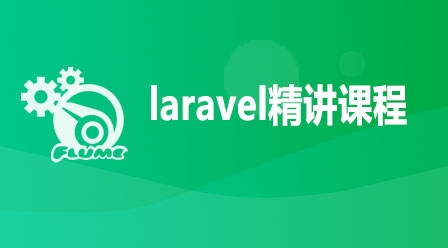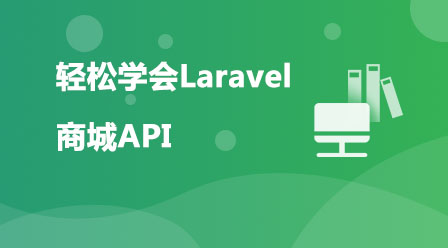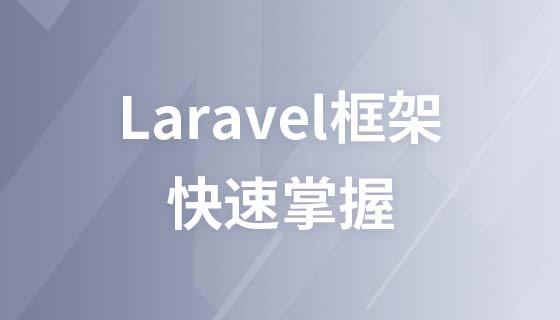如何在 Laravel 中使用 PHP 的裝飾模式?以下這篇文章就來跟大家介紹Laravel使用PHP裝飾器模式的方法,希望對大家有幫助!

設計模式對每個開發人員都很重要。它解決了您構建的每個項目中非常常見的問題。
它可以幫助您在一個物件上添加額外的行為,而又不會影響同一類別中的其他對象。
#裝飾器模式是一種設計模式,它允許動態地將行為添加到單一對象,而不會影響同一類別中其他物件的行為
假設我們有一個Post模型
class Post extends Model
{
public function scopePublished($query) {
return $query->where('published_at', '<=', 'NOW()');
}
}在我們的PostsController中,我們有如下的index方法
class PostsController extends Controller
{
public function index() {
$posts = Post::published()->get();
return $posts;
}
}為了快取帖子並避免每次我們需要列出帖子時都查詢資料庫,我們可以執行以下操作
class PostsController extends Controller
{
public function index() {
$minutes = 1440; # 1 day
$posts = Cache::remember('posts', $minutes, function () {
return Post::published()->get();
});
return $posts;
}
}現在,我們將帖子快取1天。但看看程式碼,控制器了解太多了。它知道我們緩存了多少天,它自己緩存了物件。
同樣,假設您正在為HomePageController的Tag,Category,Archives實現相同的功能。閱讀和維護的程式碼太多了。
在大多數情況下,倉庫模式是連接到裝飾器模式。
首先,讓我們使用倉庫模式分離取得貼文的方式,建立具有以下內容的app/Repositories/Posts/PostsRepositoryInterface.php
namespace App\Repositories\Posts;
interface PostsRepositoryInterface
{
public function get();
public function find(int $id);
}在同目錄下創建具有下面內容的PostsRepository
namespace App\Repositories\Posts;
use App\Post;
class PostsRepository implements PostsRepositoryInterface
{
protected $model;
public function __construct(Post $model) {
$this->model = $model;
}
public function get() {
return $this->model->published()->get();
}
public function find(int $id) {
return $this->model->published()->find($id);
}
}回到PostsController並將更改應用為
namespace App\Http\Controllers;
use App\Repositories\Posts\PostsRepositoryInterface;
use Illuminate\Http\Request;
class PostsController extends Controller
{
public function index(PostsRepositoryInterface $postsRepo) {
return $postsRepo->get();
}
}控制器變得健康,知道足夠的細節來完成工作。
在這裡,我們依靠 Laravel 的 IOC 注入 Posts 介面的具體物件來取得我們的貼文
我們需要做的就是告訴Laravel的IOC使用介面時要建立哪個類別。
在你的app/Providers/AppServiceProvider.php 添加綁定方法
namespace App\Providers;
use App\Repositories\Posts\PostsRepositoryInterface;
use App\Repositories\Posts\PostsRepository;
use Illuminate\Support\ServiceProvider;
class AppServiceProvider extends ServiceProvider
{
public function register()
{
$this->app->bind(PostsRepositoryInterface::class,PostsRepository::class);
}
}現在無論何時我們注入PostsRepositoryInterface Laravel 都會創建PostsRepository 的實例並將其傳回。
我們在一開始就說過,裝飾器模式允許將行為添加到單一對象,而不會影響同一類別中的其他物件。
在這裡快取是行為,物件/類別是 PostsRepository。
讓我們在app/Repositories/Posts/PostsCacheRepository.php 中建立具有以下內容的PostsCacheRepository
namespace App\Repositories\Posts;
use App\Post;
use Illuminate\Cache\CacheManager;
class PostsCacheRepository implements PostsRepositoryInterface
{
protected $repo;
protected $cache;
const TTL = 1440; # 1 day
public function __construct(CacheManager $cache, PostsRepository $repo) {
$this->repo = $repo;
$this->cache = $cache;
}
public function get() {
return $this->cache->remember('posts', self::TTL, function () {
return $this->repo->get();
});
}
public function find(int $id) {
return $this->cache->remember('posts.'.$id, self::TTL, function () {
return $this->repo->find($id);
});
}
}在這個類別中,我們接受Caching 物件和PostsRepository 對象,然後使用類別(裝飾器)將快取行為加入到PostsReposiory 實例。
我們可以使用相同的範例將HTTP請求傳送到某些服務,然後在失敗的情況下傳回模型。我相信您會從該模式以及它如何輕鬆添加行為中受益。
最後一件事是修改 AppServiceProvider 介面綁定以建立 PostsCacheRepository 實例而不是PostsRepository
namespace App\Providers;
use App\Repositories\Posts\PostsRepositoryInterface;
use App\Repositories\Posts\PostsCacheRepository;
use Illuminate\Support\ServiceProvider;
class AppServiceProvider extends ServiceProvider
{
public function register()
{
$this->app->bind(PostsRepositoryInterface::class,PostsCacheRepository::class);
}
}現在再次檢查文件,您會發現它非常易於閱讀和維護。同樣,它也是可測試的,如果您決定在某個時候刪除快取層。您只需在AppServiceProvider中變更綁定。無需額外更改。
原文網址:https://dev.to/ahmedash95/design-patterns-in-php- decorator-with-laravel-5hk6【相關建議:
laravel影片教學】
以上是聊聊Laravel怎麼使用 PHP 的裝飾器模式的詳細內容。更多資訊請關注PHP中文網其他相關文章!




